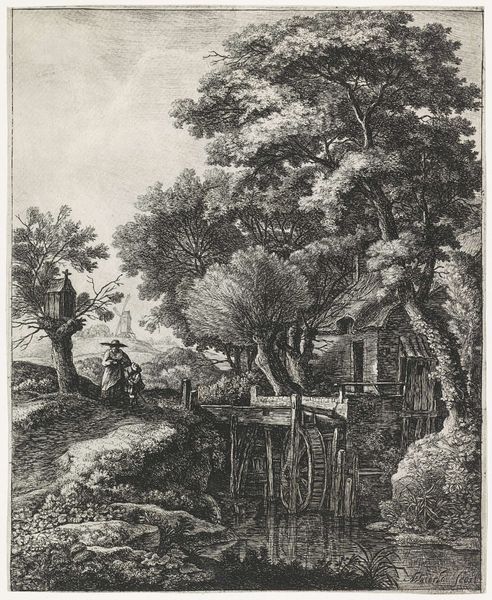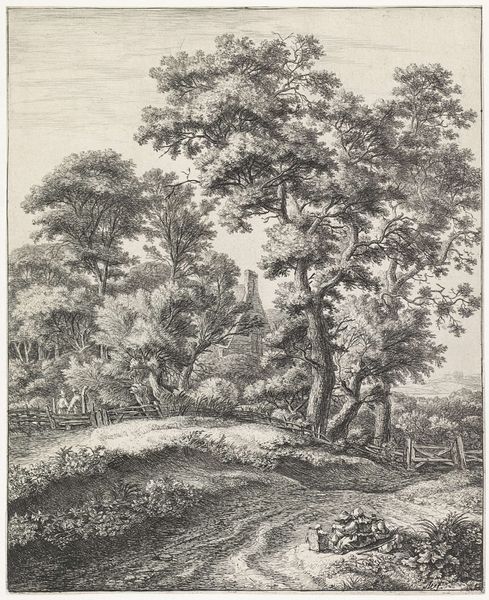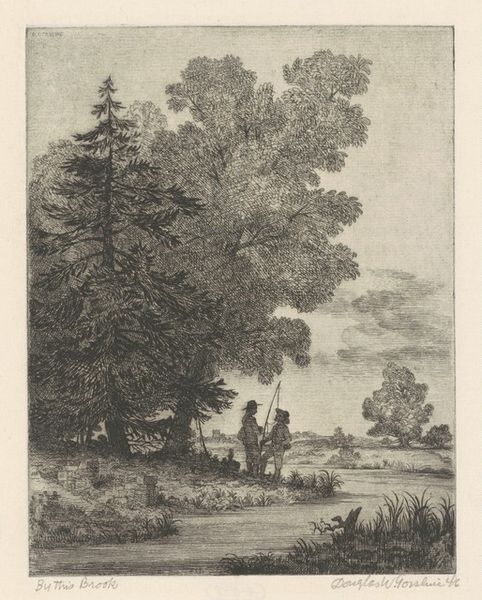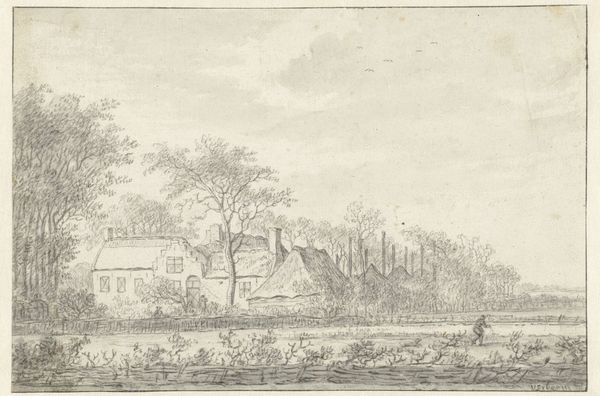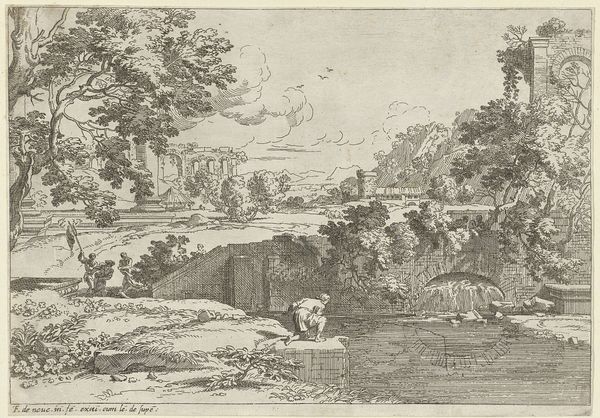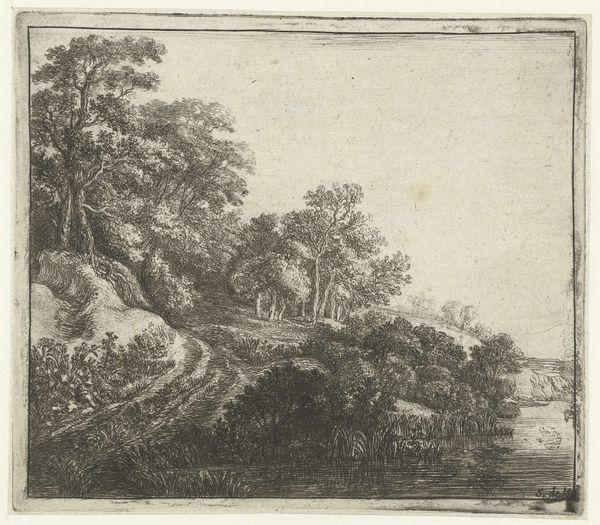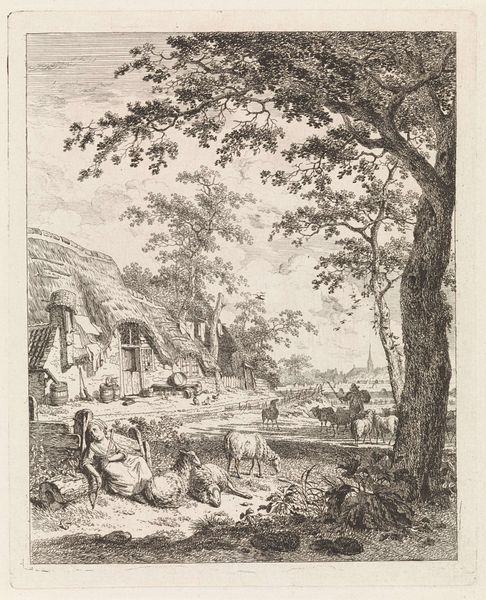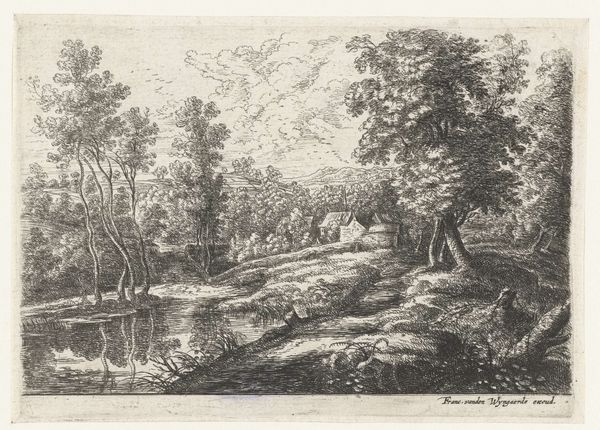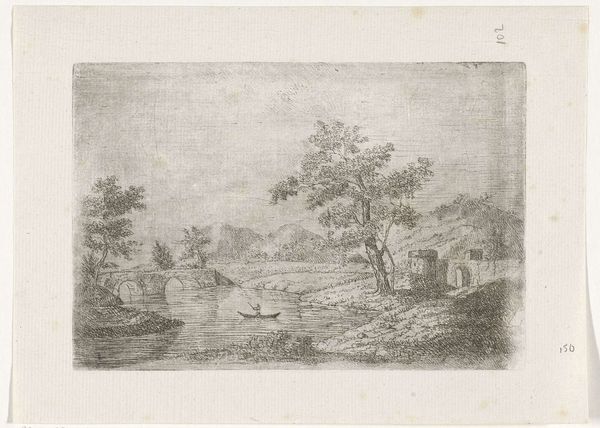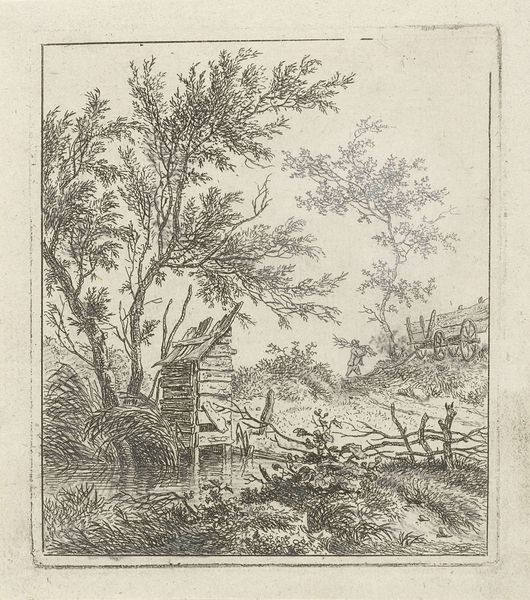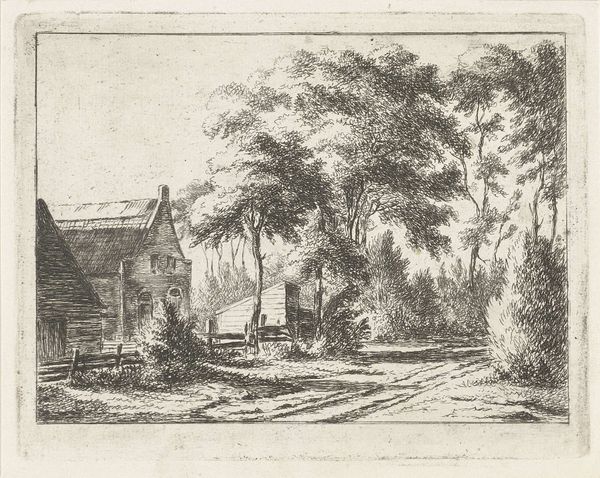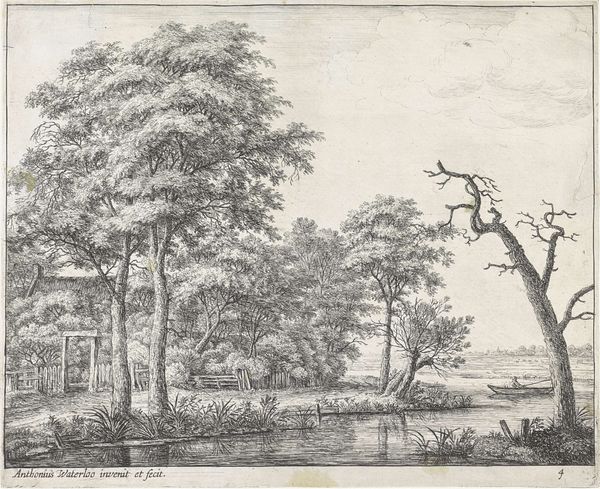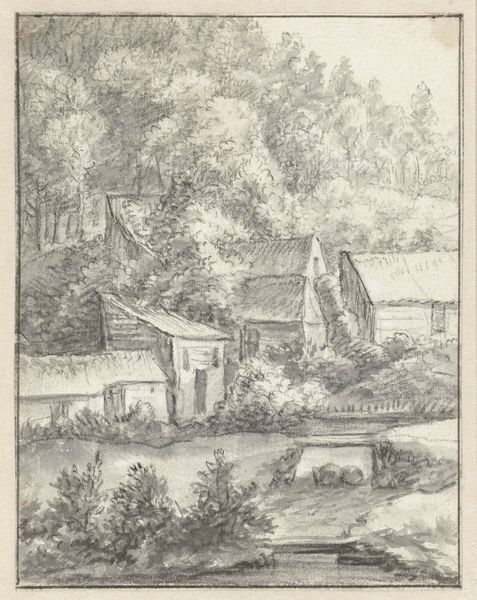
Dimensions: height 283 mm, width 250 mm
Copyright: Rijks Museum: Open Domain
Curator: Abraham Delfos created this etching, pen and pencil drawing called "Oude stadswal" sometime between 1741 and 1820. It resides here at the Rijksmuseum. What are your first thoughts? Editor: A quiet sort of melancholy pervades, don't you think? A small village scene, bathed in pale light, somehow evokes a sense of forgotten histories. Curator: Yes, it absolutely has a melancholic beauty. I see a continuity with earlier Dutch landscape traditions. Consider how water symbolizes the unconscious and emotional depths in art of this era. Here, the water feels like a mirror reflecting a bygone era. Editor: I see your point about the symbolism. I am also intrigued by the composition – the placement of the old city wall almost feels like a deliberate act of historical insertion, reminding us of the fortifications now softened by time and nature. I am particularly drawn to that lone figure standing knee-deep in the water... Curator: It's like the artist places this figure, perhaps fishing, within the context of time and landscape, and in this specific case within what feels like memory itself. These landscapes reflected a growing fascination with history and ruins within Romanticism, marking an awareness of societal and cultural changes. Editor: I wonder how the artist’s social standing might affect the narrative depicted. The detailed rendering almost romanticizes a simpler life by the water's edge. The image gives me the feeling the artist had privilege; and with privilege he idealized the lives of the common person without a critical interrogation of how those systems played out in the lives of marginalized peoples. Curator: You are right to think about how social strata influences how these themes were depicted, in this era. I appreciate the etching style, it gives such a tactile sense. It also offers a subtle visual nod to the artistic skills being cultivated during this timeframe. Do you feel any symbolism specifically comes from its detailed and fine artistic work? Editor: Absolutely. The precision perhaps highlights the effort to memorialize this old city wall but also suggests a kind of nostalgic lens through which history is being viewed, smoothed over. This work encourages contemplation about progress and memory in 18th and 19th century Europe, how class anxieties and idyllic rural existences shape representations of time passing and worlds transforming. Curator: A very insightful way to understand Delfos’ artistic contribution. His skilled approach also reveals much about what he was trying to transmit through familiar imagery and the artistic processes themselves. Editor: It's a layered artwork that really makes you think about the narratives we build around our past and who gets to write them.
Comments
No comments
Be the first to comment and join the conversation on the ultimate creative platform.
